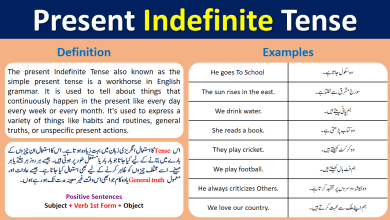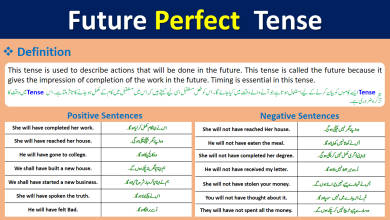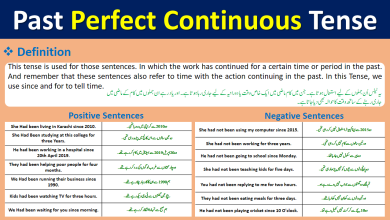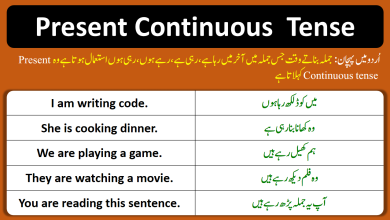Past Continuous Tense Definition Examples In Urdu
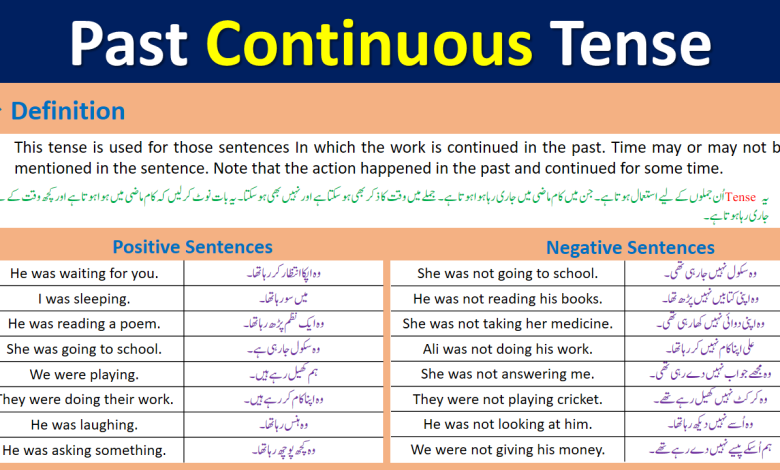
If you don’t know about the Past tense here, I will teach you the complete past tense, which includes past indefinite Continuous In Urdu, Perfect, or Perfect Continuous. In the previous lesson, we discussed the past indefinite Tense, and today we will discuss the past continuous tense. If you are a true English speaker and want to speak English fluently, then you must learn tenses first.
In this lesson, you will learn the past Continuous Tense Definition Examples In Urdu which is very important for your English learning. I will provide you the links to previous Tenses in the below just click on the links and go to the previous tense so that you can improve your English speaking skills.
What Is Past Continuous Tense In Urdu?
This tense is used for those sentences. In which the work is continued in the past. Time may or may not be mentioned in the sentence. Note that the action happened in the past and continued for some time. To make the past continuous tense, you use the words “was” or “were” and add “-ing” to the main verb.
یہ Tense اُن جملوں کے لیے استعمال ہوتا ہے۔ جن میں کام ماضی میں جاری رہا ہوا ہوتا ہے۔ جملے میں وقت کا ذکر بھی ہو سکتا ہے اور نہیں بھی ہوسکتا۔ یہ بات نوٹ کر لیں کہ کام ماضی میں ہوا ہوتا ہے اور کچھ وقت کے لیے جاری رہا ہوتا ہے۔
Before Reading This I recommend you Learn The: Past Indefinite Tense
اُردو میں پہچان
اس ٹینس میں جملوں کے آخر میں ” رہا تھا ” رہی تھی ” رہے تھے” جیسے الفاظ آتے ہیں۔
Positive Sentences
- In this Tense, We add” ing ” to the 1st form of the verb to make sentences.
- We use “ was ” were ” as a helping verb in this tense.
- If a sentence’s subject has any ” name ” singular noun or ” He ” or ” She ” It ” then we use Was in the sentence.
- If a sentence’s subject has a plural noun or ” I ” ” We ” You ” or ” They ” then we use were in the sentence.
Structure
Subject + Was/ Were + Verb ( 1st form+ ing ) + Object
Examples
| He was waiting for you. | وہ اپکا انتظار کر رہا تھا۔ |
| I was sleeping. | میں سو رہا تھا۔ |
| He was reading a poem. | وہ ایک نظم پڑھ رہا تھا۔ |
| She was going to school. | وہ سکول جا رہی ہے۔ |
| We were playing. | ہم کھیل رہے ہیں۔ |
| They were doing their work. | وہ اپنا کام کر رہے ہیں۔ |
| He was laughing. | وہ ہنس رہاتھا۔ |
| He was asking something. | وہ کچھ پوچھ رہا تھا ۔ |
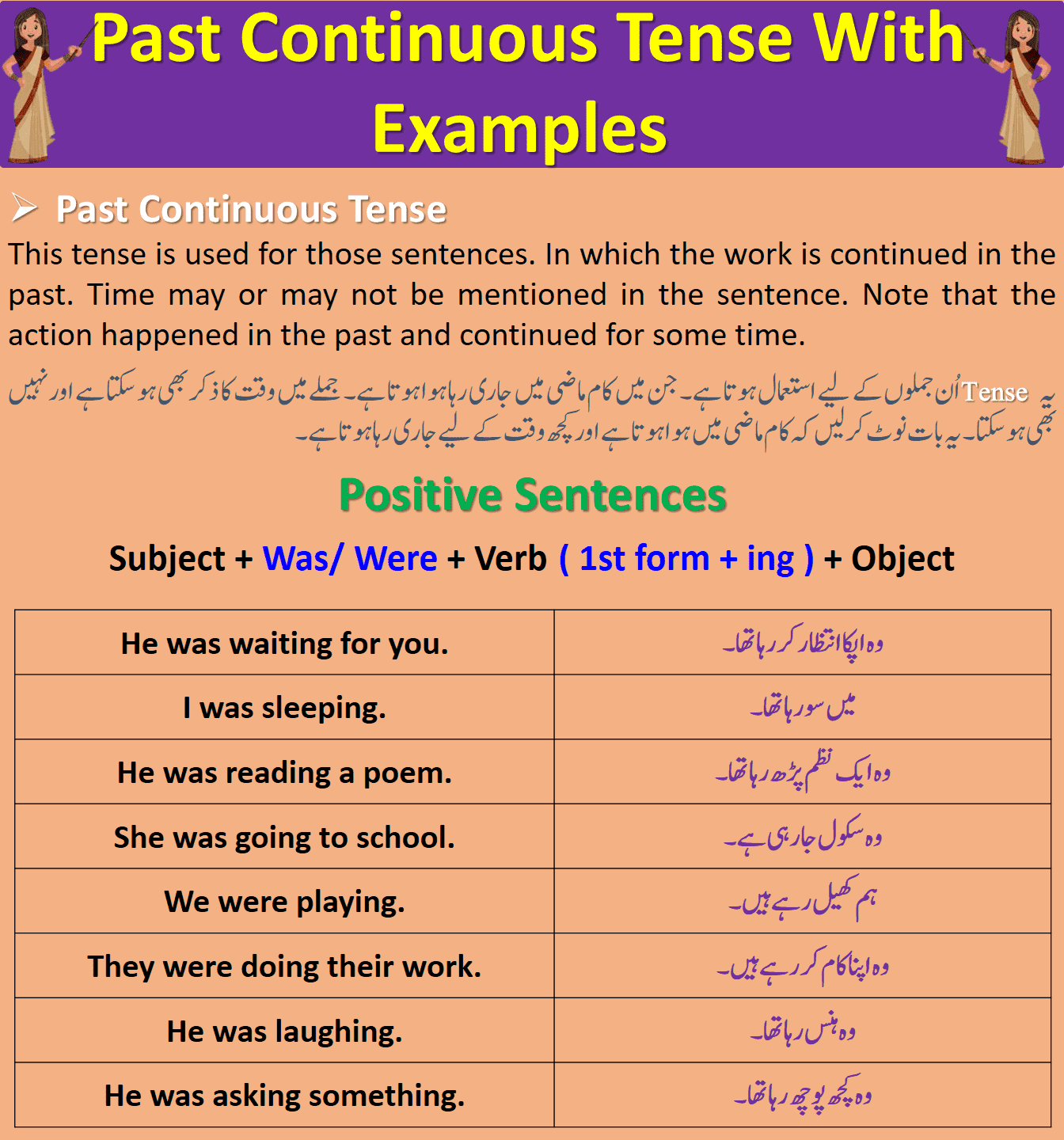
Before Reading This I recommend you Learn The: Present Perfect Continuous Tense
Negative Sentences
- When we make negative sentences in the past continuous Tense there is only one change we use ” Not ” after the was and were.
Structure
Subject + Was/ Were + Not + Verb ( 1st form+ ing ) + Object
Examples
| She was not going to school. | وہ سکول نہیں جا رہی تھی۔ |
| He was not reading his books. | وہ اپنی کتابیں نہیں پڑھ تھا۔ |
| She was not taking her medicine. | وہ اپنی دوائی نہیں کھا رہی تھی۔ |
| Ali was not doing his work. | علی اپنا کام نہیں کر رہا تھا۔ |
| She was not answering me. | وہ مجھے جواب نہیں دے رہی تھی۔ |
| They were not playing cricket. | وہ کرکٹ نہیں کھیل رہے تھے۔ |
| He was not looking at him. | وہ اُسے نہیں دیکھ رہا تھا۔ |
| We were not giving his money. | ہم اُسکے پیسے نہیں دے رہے تھے۔ |

Before Reading This I recommend you Learn The: Present Perfect Tense
Interrogative Sentences
- When we make interrogative sentences in the past continuous Tense there is only one change we use was and were at the start of the sentence.
Structure
Was/ Were + Subject + Verb ( 1st form+ ing ) + Object
Examples
| Was she sleeping? | کیا وہ سو رہی تھی؟ |
| Was he watching TV? | کیا وہ ٹی وی دیکھ ریا تھا؟ |
| Were we Playing cricket? | کیا ہم کرکٹ کھیل رہے تھے؟ |
| Was she teaching Kids? | کیا وہ بچوں کو پڑھا رہا تھا؟ |
| Was he singing a song? | کیا وہ گانا گا رہی تھی؟ |
| Was he eating the meal? | کیا ہم کھانا کھا رہے تھے؟ |
| Were you crying? | کیا تم رو رہے تھے؟ |
| Was he answering correctly? | کیا وہ صیح جواب دے رہاتھا؟ |

